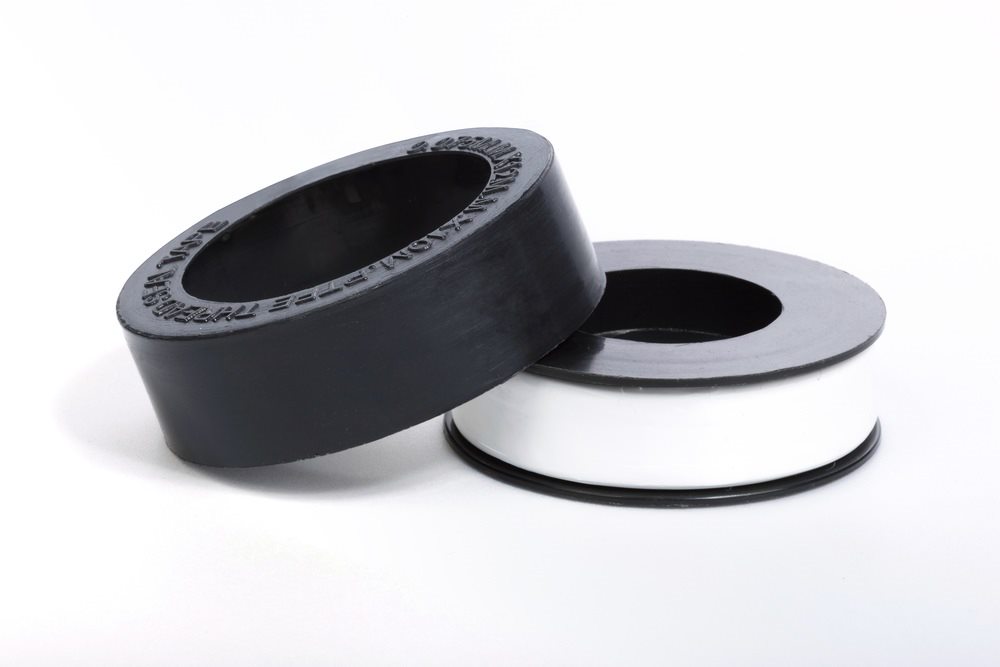Plumbing work can be both complex and intricate, but there’s one simple tool that can make a world of difference, especially in emergencies: plumber’s tape. In this article, we’ll explore what plumber’s tape is, the types of pipes it can be used for and how to use it correctly. By the end of this article, you’ll be well on your way to becoming an expert in plumber’s tape application.
What is Plumber's Tape?
Plumber’s tape, also known as thread seal tape or PTFE tape, is a thin, white, non-adhesive tape made from polytetrafluoroethylene (PTFE) material. It’s specifically designed to create a watertight seal between threaded pipe connections, preventing leaks and ensuring a secure fit. The tape serves as a lubricant, allowing for easy tightening and disassembly of pipes when necessary.
Types of Pipes Plumber’s Tape Can Be Used For
Plumber’s tape is a versatile tool that can be used on various pipe materials and types. The common pipe materials and types plumber’s tape is suitable for include:
Metal Pipes
Plumber’s tape is ideal for use on metal pipes, such as brass, copper and galvanised steel. It helps create a tight seal, prevents galling and protects the threads from damage.
PVC Pipes
Although plumber’s tape isn’t always necessary for PVC pipes, it can still provide extra security and prevent leaks in certain situations.
Gas Pipes
Yellow PTFE tape is specifically designed for gas pipe connections. It’s thicker than standard plumber’s tape and offers enhanced sealing properties. Remember your gas pipes should always be taken care of by a professional gasfitter. Trying to alter your own gas pipes can be dangerous and even lethal.
How to Use Plumber’s Tape Correctly
Follow these simple steps to ensure the proper application of plumber’s tape on your pipes:
Step 1: Clean the Threads
Before applying the tape, ensure the pipe threads are clean and free from debris. This will help the tape adhere better and create a more secure seal.
Step 2: Apply the Tape
Hold the pipe in one hand and the tape in the other. Starting at the end of the pipe, wrap the tape clockwise around the threads, covering them completely. Make sure to keep the tape taut and overlap each layer by about half the tape’s width.
Step 3: Wrap Enough Layers
For most pipe connections, 3-4 layers of plumber’s tape are sufficient. For larger pipes or high-pressure applications, additional layers may be necessary. Ensure the tape is wrapped tightly and evenly around the threads.
Step 4: Trim Excess Tape
Once you’ve wrapped the necessary layers, tear off the remaining tape and press the end firmly against the threads to prevent it from unravelling.
Step 5: Assemble the Connection
Carefully thread the pipes together, ensuring the tape stays in place. Tighten the connection securely but be careful not to overtighten as this can damage the threads or the seal.
The Expert Plumbers Next Door
Now you’re equipped with the knowledge of when and how to use plumber’s tape, you’ll be better prepared to tackle its application if you need to. However, if you ever find yourself in need of a professional plumber, don’t hesitate to reach out to Expert Plumbing & Solar Services. Our skilled team is here to help with all your plumbing needs, ensuring your systems are running smoothly and efficiently. Give us a call today!






